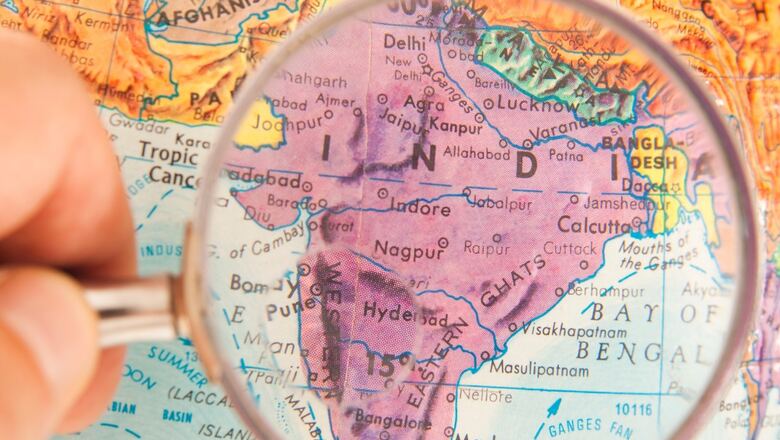
views
The conspicuous element in the military and political history of ancient and early medieval Bharatavarsha is the astonishing sprawl of great Hindu empires that rose and fell on the so-called Indo-Gangetic Plain. Most of these empires were also remarkable for their longevity. Thus, for extended centuries, the so-called Indo-Gangetic Plain teemed with vast Hindu empires at such diverse and far-flung places like Magadha (Bihar), Kanyakubja (Uttar Pradesh), and Gauda-Desha (Bengal-Odisha).
All these empires, in turn, reduced smaller kingdoms into feudatories and built an enduring complex of interconnected networks of social order and functional harmony underlaid by noble codes of conduct, law and loyalty.
Measured in terms of influence, impact and durability, if we consider the Maurya Empire as a rough starting point and end it with the death of Harshavardhana of Kannauj, we get a panoramic time travel lounged over an uninterrupted millennium of imperial Hindu rule. But even before the Mauryan Empire—the first imperial Hindu Empire—it is not a coincidence that the destinies of the Kurus and the Panchalas were decided in this region, and it is certainly not a quirk of fate that the cataclysmic Mahabharata war was fought at Kurukshetra.
Overall, the cordial geography of the plains was the great enabler of this fount of Hindu civilisation.
When we return to Dakshinapatha, this spatial panorama significantly alters but on the scale of achievement, it compares favourably with Uttarapatha.
Despite the hazardous landscape and nature-enforced obstacles, Dakshinapatha continuously birthed some of the most outstanding Hindu empires throughout history. The fables of the power, the prowess of the vast military, and the prosperity of the sprawling cities of these empires reached all the way up to the badlands of Arabia and echoed in the citadels of Christian Europe.
The earliest of these is undoubtedly the Satavahana Empire ruling from Andhra from the second century BCE to the third century CE. Other notable empires that followed include the Vakataka, Pallava, Chola, Kadamba, Ganga, Chalukya, Rashtrakuta, Pandya, Chera, Western Chalukya, Hoysala, Yadava, Kakatiya, Musunuri Nayaka, Reddi, Vijayanagara, Maratha and the Mysore Wodeyar kingdom. The timeline continuously occupied by these empires totals roughly up to 2100 years.
A Great Military Theatre
Dissimilarity sometimes invites disaster.
The Himalayan protection—literally—was the great and obvious advantage that enabled the ascent and sustenance of the aforementioned great Hindu empires in Uttarapatha. However, to the determined and plunder-hungry alien conqueror, it was only a matter of time and dogged effort to either circumvent or destroy the toughest obstacle. In the specific case of Uttarapatha, the forces of alien Islamic invaders—unlike their predecessors—eventually met with serial successes owing to three major factors:
- They retained, used, improved, and expanded on the geographical knowledge of infidel Hindustan left behind by the early Arab geographers and merchants.
- A major breakthrough in this accumulation of geographical knowledge was their discovery of the importance of the dictates of time—i.e., the most appropriate season for launching invasions.
- The myopia and complacency of Hindu rulers who allowed the barbaric invader at the gate to barge into their living rooms.
In the context of this essay series, we can examine the second point in some detail.
From the onset of the Āṣāḍa (June) season to the dusk of the Bhādrapada (September) season, rains overran the whole of Bharatavarsha, making military operations impossible. Seas are in high tide, rivers crescent to the deathly tune of the rain gods, and the mahapathas (highways) and ghantapathas (superhighways) turn to browny pools of mud, fields are submerged under water, and villages located on the higher slopes become islands…all of them obey these liquid laws of nature, enforced annually.
Perhaps it is only Bharatavarsha’s genius that gave a profoundly spiritual obeisance to these laws by devising the Cāturmāsya system where acharyas, gurus, monks and mendicants spent the rainy quarter of the year engaged in inward contemplation, teaching and revision of our sacred literature.
To be continued
The author is the founder and chief editor, The Dharma Dispatch. Views expressed in the above piece are personal and solely that of the author. They do not necessarily reflect News18’s views.




















Comments
0 comment